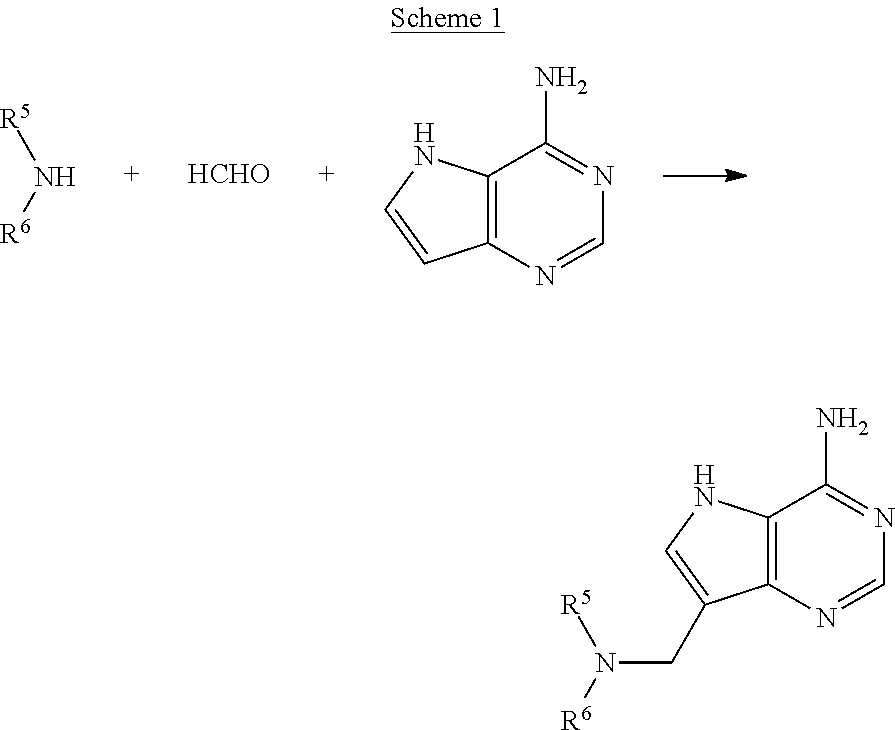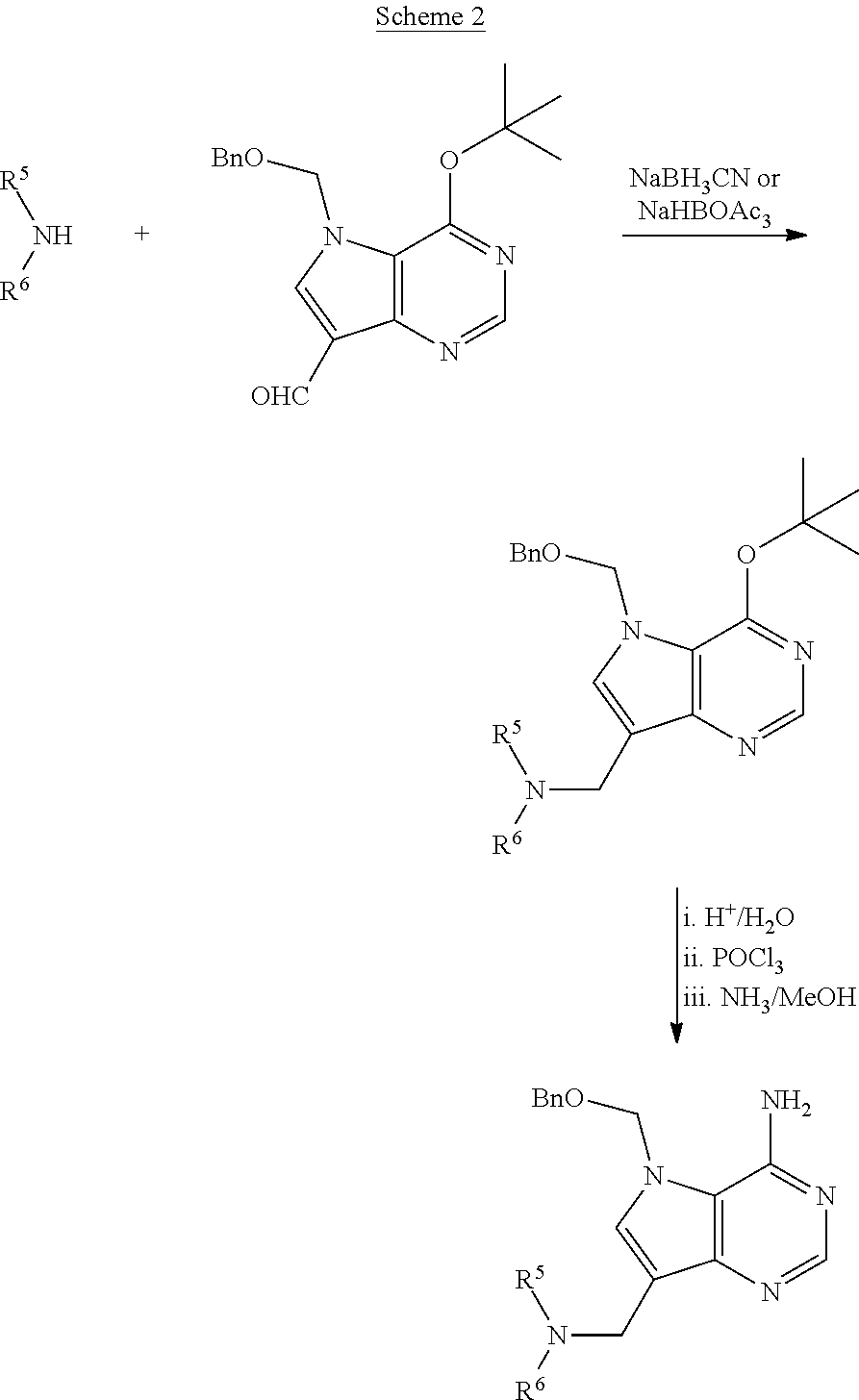Acyclic amine inhibitors of 5-methytioadenosine phosphorylase and nucleosidase
a technology of adenosine phosphorylase and acyclic amine, which is applied in the field of nucleoside analogues, can solve the problems of limiting the polyamine biosynthesis and the salvage pathway of adenine in the cell, reducing the overall quality of life of a man, and limited treatment options
- Summary
- Abstract
- Description
- Claims
- Application Information
AI Technical Summary
Benefits of technology
Problems solved by technology
Method used
Image
Examples
example 1
2-((4-amino-5H-pyrrolo[3,2-d]pyrimidin-7-yl)methylamino)-2-(methylthiomethyl)propane-1,3-diol
[0139]
example 1.1
Synthesis of N-(5-(hydroxymethyl)-2,2-dimethyl-1,3-dioxan-5-yl)pivalamide
[0140]A solution of 2-amino-2-(hydroxymethyl)propane-1,3-diol (15.7 g, 130 mmol) and di-tert-butyl dicarbonate (31.1 g, 143 mmol) in methanol (400 mL) and water (40 mL) was stirred at ambient temperature for 72 h. The contents of the flask were evaporated and the resulting white solid dissolved in minimal hot ethyl acetate and allowed to recrystallise overnight. The crystals were filtered and washed with petroleum ether to give N-(1,3-dihydroxy-2-(hydroxymethyl)propan-2-yl)pivalamide (26.5 g, 130 mmol, 100%) as fluffy, white needles. To a solution of N-(1,3-dihydroxy-2-(hydroxymethyl)propan-2-yl)pivalamide (9.50 g, 42.0 mmol) and 2,2-dimethoxypropane (16.0 mL, 129 mmol) in DMF (100 mL) was added pyridinium para-toluenesulfonate (0.540 g, 2.15 mmol) at RT. The reaction was stirred at ambient temperature for 15 h. after which time the reaction was complete by TLC (petroleum ether:ethyl acetate, 4:1, visualised wi...
example 1.2
Synthesis of tert-butyl 2,2-dimethyl-5-(methylthiomethyl)-1,3-dioxan-5-ylcarbamate
[0141]To a solution of N-(5-(hydroxymethyl)-2,2-dimethyl-1,3-dioxan-5-yl)pivalamide (1.03 g, 4.20 mmol) and triethylamine (1.52 mL, 10.9 mmol) in CH2Cl2 (10 mL) was added methanesulfonyl chloride (0.425 mL, 5.46 mmol) dropwise at 0° C. The reaction was allowed to warm to room temperature and was complete after 1.5 h as indicated by TLC (petroleum ether:ethyl acetate, 4:1, visualised with Erlichs). The reaction mixture was diluted with CH2Cl2, washed with water and brine, dried over magnesium sulfate, filtered and evaporated to yield (2,2-dimethyl-5-pivalamino-1,3-dioxan-5-yl)-methyl methanesulfonate (1.35 g, 4.17 mmol, 99%) as a pale yellow solid. To a solution of (2,2-dimethyl-5-pivalamino-1,3-dioxan-5-yl)-methyl methanesulfonate (0.566 g, 1.67 mmol), in DMF (3 mL) was added sodium thiomethoxide (0.292 g, 4.17 mmol) at room temperature under argon for 15 h. TLC (petroleum ether:ethyl acetate, 4:1, vis...
PUM
| Property | Measurement | Unit |
|---|---|---|
| path length | aaaaa | aaaaa |
| temperature | aaaaa | aaaaa |
| temperature | aaaaa | aaaaa |
Abstract
Description
Claims
Application Information
 Login to View More
Login to View More - R&D
- Intellectual Property
- Life Sciences
- Materials
- Tech Scout
- Unparalleled Data Quality
- Higher Quality Content
- 60% Fewer Hallucinations
Browse by: Latest US Patents, China's latest patents, Technical Efficacy Thesaurus, Application Domain, Technology Topic, Popular Technical Reports.
© 2025 PatSnap. All rights reserved.Legal|Privacy policy|Modern Slavery Act Transparency Statement|Sitemap|About US| Contact US: help@patsnap.com



